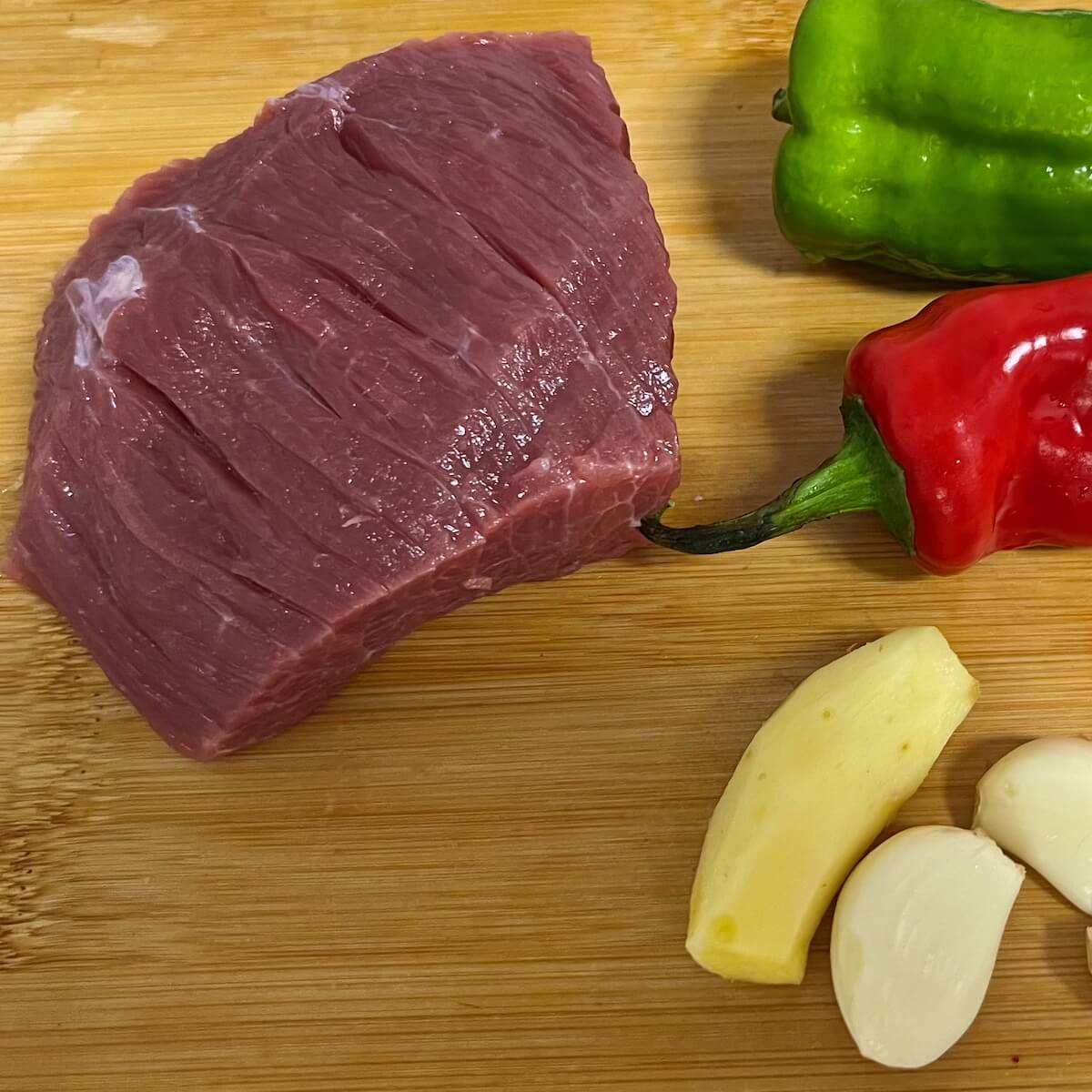Beef is one of most dense sources of protein, essential to muscle health. Beef also contains zinc and is a good source of iron, helping to fight iron-deficiency anemia (source: WebMD). If you spend any time in U.S. grocery stores, you will notice that, for the best cuts, the price of beef is upwards of $11 per pound (454 grams). Having grilled steaks for dinner is almost as expensive as an evening dining out. One of the benefits of learning to cook Chinese cuisine is that many authentic Chinese dishes can stretch a small amount of protein to feed a whole family. We have several Chinese beef dishes on My Chinese Home Kitchen that can stretch a pound or pound and a half (454 to 680 grams) to make multiple meals.

Necessity is the mother of invention
For various reasons of geography and climate, Chinese cuisines are the result of ingenious adaptation to scarcity.
…the vast majority of Chinese spent their lives short of fuel, cooking oil, utensils, and even water….Chinese ingenuity has gone in another and ecologically sounder direction: designing the most versatile possible tools that can be used for every imaginable task.
Anderson, E. N., The Food of China. 1988, Yale University Press
The traditional design of Chinese stoves yields an incredible amount of heat for cooking with a modest use of fuel. However, as Anderson writes, the most indispensable tool in the Chinese kitchen is the knife. Knife skills are crucial for any professional chef, but this is also true in the typical Chinese home. Meat is usually cut on the bias, in thin, broad slices that yield a maximum surface area for rapid cooking and absorbing flavors and tenderizing from sauces. Thus, good knife skills are essential to make the most economical use of beef.
Chinese dishes typically make maximum use of a small amount of protein in this way. Further, this approach allows tougher cuts of meat to become tender and palatable with a short time for marinade. Traditionally, beef was typically eaten after the animal that pulled the plow died. This meat is tougher and leaner than beef from animals raised for slaughter. So, using these techniques, you can offset the high price of beef and still enjoy tender, delicious, healthy beef dishes.
Cuts of beef to choose for Chinese beef dishes
Typically, lean beef is used in Chinese beef dishes, and because of the way it is prepared, you can use cheaper cuts, like sirloin, bottom round, shoulder steaks, and flank steak. Premium steak cuts, such as USDA Choice NY Strip or Ribeye are currently between $11 to $15 per pound. The price of USDA Choice or Select shoulder steak, sirloin, and bottom round is typically much less, ranging from $5 to $9 per pound, and are perfect for Chinese cooking techniques.
USDA beef grading explained
There are three grades of beef for sale in stores, and two styles of aging. The most tender, flavorful, and expensive are Prime, dry-aged cuts. Most beef in stores is wet-aged. Dry aging is done by hanging the beef for a period of time to allow the meat to become more tender, but this also results in loss. The best steak houses serve dry-aged beef.
The USDA grades, Prime, Choice, and Select, are based on the amount of marbling (fat) in the beef. Young tender beef with a lot of marbling is graded as Prime. The marbling makes the meat tender and juicy, full of flavor, and this is the best grade for grilling. It’s also the most expensive grade of beef.
Choice grade beef is the most common in grocery stores, and has less marbling than Prime cuts. Choice beef is also quite juicy and flavorful, and remains tender when grilled (NY Strip, Ribeye, etc.). Leaner cuts are better cooked with braising, roasting, or simmering techniques.
Select cuts have the least marbling, and may also come from older animals, such as dairy cows that are too old to produce milk. These cuts are best for braising, roasting, marinading, simmering, etc. They are the least expensive per pound, but still delicious and very tender when cooked using Chinese techniques.
Making two recipes with a pound (454 grams) of beef
A single cut of 16 ounces can be divided and used to make any two or three of these recipes:
Making two dishes with 1.5 to 2 pound cuts of beef
A purchase of a single, low-cost, lean cut of beef, such as a sirloin, bottom round, or shoulder steak, can make any two of these dishes yielding up to four servings each. With the price of beef at $5 to $8 per pound for bottom round, a 1.5 pound cut will cost $9 to $13. Using these recipes, when paired with rice and a side of vegetables, you can get up to 8 servings for a total cost of $1.63 per serving (for the beef).
Do you enjoy My Chinese Home Kitchen?
We enjoy sharing these authentic home recipes with you. My Chinese Home Kitchen is a labor of love.
Please tell your friends about us!
Learn more about My Chinese Home Kitchen at our About page.
Please leave a comment, or SUBSCRIBE to our newsletter.
For more of our original videos, visit My Chinese Home Kitchen on YouTube and Rumble.










Very informative